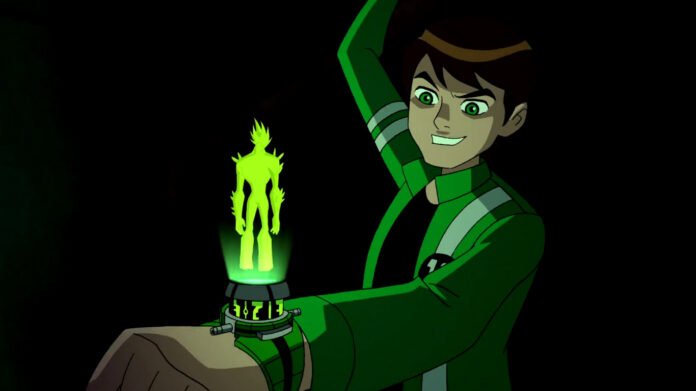Few animated series have captivated the imaginations of children and adults like Ben 10. With its adventurous concept, memorable characters, and captivating alien transformations, Ben 10 became a cultural touchstone in the mid-2000s. However, like many successful franchises, it experienced both glory and decline. In this blog, we explore the rise of Ben 10, what made it a global success, and the eventual missteps that contributed to its decline.
The Rise: A Revolutionary Idea with Global Appeal
Launched on December 27, 2005, Ben 10 was the brainchild of the American animation team “Man of Action,” which included Joe Casey, Joe Kelly, Duncan Rouleau, and Steven T. Seagle. It premiered on Cartoon Network and immediately resonated with viewers for several reasons:
1. Unique Premise
The story follows Ben Tennyson, a 10-year-old boy who discovers a mysterious alien device called the Omnitrix, which allows him to transform into various alien creatures. Each alien had distinct abilities, adding excitement to every episode and opening up endless possibilities for plotlines.
2. Memorable Characters
Aside from Ben, other characters—like his intelligent cousin Gwen and his grumpy but lovable grandfather Max—were essential to the series’ charm. Villains such as Vilgax became iconic, adding real stakes to the story.
3. Perfect Blend of Action, Comedy, and Drama
The show’s writers managed to create an engaging balance between action and humor while also sneaking in valuable life lessons. Themes like responsibility, teamwork, and standing up for what is right made it more than just a kids’ show.
4. Merchandising Success
Cartoon Network’s marketing strategy was highly effective, with an explosion of merchandise, from action figures to Omnitrix replicas. This not only drove the show’s popularity but also expanded the franchise into video games, movies, and comics.
The Evolution: New Series and Expanding the Universe
The original series ran from 2005 to 2008, and its massive popularity led to several sequels that expanded Ben’s adventures:
Ben 10:
Alien Force (2008-2010) introduced a teenage Ben and a more mature storyline.
Ben 10:
Ultimate Alien (2010-2012) saw Ben mastering new alien forms and tackling bigger threats.
Ben 10:
Omniverse (2012-2014) changed the animation style, emphasizing a more light-hearted tone and introducing new sidekicks.
These sequels built on the foundation of the original, adding depth to the story and character development. The shift to older characters reflected an attempt to grow with the audience, which initially worked well.
The Fall: What Went Wrong?
Despite its immense success, the Ben 10 franchise began to lose its charm over time. Several factors contributed to its decline:
1. Over-Saturation of Content
While expanding the universe through sequels was exciting at first, the constant release of new series led to franchise fatigue. By the time Ben 10: Omniverse aired, many viewers felt overwhelmed by the sheer amount of content. The shift between new shows was so frequent that it became harder to keep track of the storyline.
2. Drastic Changes in Art Style
One of the most controversial decisions was the change in animation style, especially in Ben 10: Omniverse. Fans of the original series found it difficult to adjust to the exaggerated, cartoony art style, which seemed to target a younger audience. The tonal shift alienated the older fans who had grown up with the more serious Alien Force and Ultimate Alien storylines.
3. Reboot Issues
In 2016, Cartoon Network launched a reboot of Ben 10, returning Ben to his 10-year-old self and adopting a simpler animation style. While the reboot aimed to attract a new generation of viewers, it failed to capture the spirit of the original. The storytelling became more episodic and less focused on long-term character development, frustrating fans of the earlier series.
4. Competition from Other Franchises
During its peak, Ben 10 was a dominant force in children’s television. However, with the rise of other animated series and franchises like Adventure Time, Steven Universe, and Marvel superhero shows, Ben 10 struggled to maintain the same level of relevance.
Impact and Legacy
Despite its decline, Ben 10 remains one of the most influential children’s series in television history. It paved the way for future action-based cartoons and demonstrated the power of multimedia franchising. Many children from the 2000s fondly remember collecting Omnitrix toys, playing Ben 10 video games, and watching the adventures unfold on TV.
Even with its reboot’s mixed reception, the Ben 10 brand continues to exist through reruns, streaming services, and merchandise. The franchise’s emphasis on creativity, teamwork, and responsibility left a lasting impression on its fans.
Can Ben 10 Rise Again?
While Ben 10 may no longer dominate the airwaves as it once did, its legacy remains intact. There is always a chance for a revival or reboot done right, especially as nostalgia-driven content continues to grow in popularity. With the right mix of storytelling, animation, and innovation, Ben 10 could once again capture the hearts of new and old fans alike.
For now, though, the franchise stands as a reminder of how swiftly the entertainment industry can change—and how even the brightest stars must adapt or fade away.



